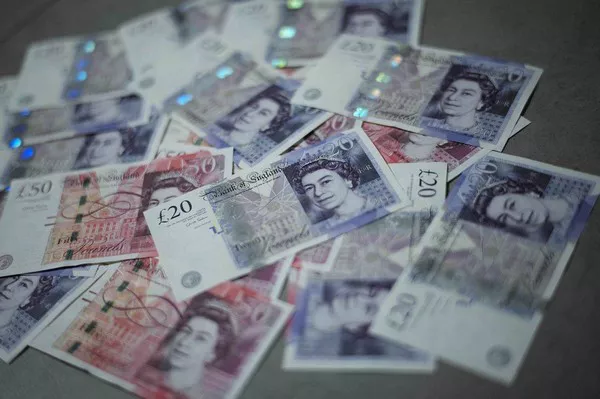The strength of a currency is influenced by a myriad of factors, including economic indicators, political stability, market sentiment, and global trade dynamics. In the case of the British Pound (GBP) versus the Euro (EUR), several key elements contribute to the GBP’s relative strength. This article examines these factors comprehensively to provide insights into why the GBP tends to outperform the EUR in currency markets.
Interest Rates
Interest rates play a crucial role in determining currency value. The Bank of England (BoE) sets interest rates for the GBP, while the European Central Bank (ECB) controls rates for the EUR. Historically, the BoE has maintained higher interest rates compared to the ECB. Higher interest rates attract foreign capital inflows, driving up demand for the GBP and increasing its value relative to the EUR. Conversely, lower interest rates in the Eurozone may lead to capital outflows, weakening the EUR against the GBP.
Economic Performance
Analyzing the economic performance of the UK and the Eurozone provides further insights into currency valuation. Despite challenges such as Brexit uncertainty, the UK has exhibited resilience in its economic indicators. GDP growth rates have remained positive, albeit somewhat subdued, while unemployment rates have trended lower. In contrast, the Eurozone has faced stagnation and occasional recessionary pressures, with some member countries grappling with high unemployment and sluggish growth. The relatively stronger economic fundamentals of the UK contribute to the GBP’s strength against the EUR.
Political Stability
Political events and stability significantly impact currency valuation. The UK’s decision to leave the European Union (EU), commonly known as Brexit, introduced uncertainty into the economic and political landscape. However, as the Brexit process unfolded, the UK demonstrated a degree of resilience, reaching trade agreements and securing its position as a global trading partner. While Brexit initially exerted downward pressure on the GBP, clarity and progress in negotiations have helped restore confidence in the currency. In contrast, political challenges within the Eurozone, such as disagreements among member states and concerns over the EU’s future integration, have occasionally weighed on the EUR.
Trade Balances
Trade balances reflect the relationship between exports and imports, influencing currency strength. The UK has historically maintained a trade deficit, importing more goods and services than it exports. However, the UK’s trade relationships, particularly with non-EU countries, have helped mitigate the impact of its trade imbalance. Additionally, the depreciation of the GBP following the Brexit referendum made UK exports more competitive in international markets, contributing to a narrowing of the trade deficit. In contrast, the Eurozone generally maintains a trade surplus, exporting more than it imports. However, disparities among member states’ trade balances within the Eurozone can create volatility in the EUR.
Investment Flows
Foreign investment flows into the UK and the Eurozone influence currency valuation. The UK has traditionally been an attractive destination for foreign direct investment (FDI) due to its robust legal framework, business-friendly environment, and access to global markets. Despite Brexit-related uncertainties, the UK continues to attract FDI, supporting the GBP. Furthermore, portfolio investment flows into UK financial markets contribute to the demand for GBP-denominated assets. In contrast, the Eurozone also receives significant FDI inflows, but uncertainties surrounding the EU’s political and economic future can dampen investor confidence in the EUR.
Market Sentiment
Market sentiment, including investor confidence and speculative positioning, plays a crucial role in currency markets. Positive economic data, political stability, and favorable policy decisions can bolster confidence in a currency, driving up its value. Conversely, negative news, geopolitical tensions, or economic downturns can erode confidence, leading to currency depreciation. Market sentiment towards the GBP has fluctuated in response to Brexit-related developments, but overall sentiment has improved as clarity emerged. In contrast, sentiment towards the EUR may be influenced by concerns over the Eurozone’s economic outlook, political stability, and internal cohesion.
Historical Context
A historical perspective on the GBP/EUR exchange rate provides valuable insights into past trends and significant events shaping currency valuation. The GBP has exhibited periods of strength and weakness against the EUR, influenced by factors such as economic cycles, political developments, and global events. The impact of historical events, including financial crises, policy decisions, and geopolitical tensions, can be observed in the fluctuations of the GBP/EUR exchange rate. Understanding historical context helps contextualize current trends and anticipate future movements in the currency pair.
Future Outlook
Looking ahead, several factors may influence the future trajectory of the GBP/EUR exchange rate. Continued progress in Brexit negotiations, economic recovery post-pandemic, and policy decisions by central banks will shape currency dynamics. Additionally, geopolitical developments, trade relations, and global economic trends will impact investor sentiment towards both currencies. Monitoring economic indicators, political events, and market sentiment will be essential for anticipating potential shifts in the GBP/EUR exchange rate and positioning accordingly.
Conclusion
The strength of the GBP relative to the EUR is influenced by a complex interplay of factors, including interest rates, economic performance, political stability, trade balances, investment flows, market sentiment, and historical context. While the GBP has demonstrated resilience in the face of challenges such as Brexit, the EUR’s valuation is influenced by the Eurozone’s economic outlook and political dynamics. Understanding these factors provides valuable insights for investors, businesses, and policymakers navigating the dynamic landscape of currency markets. As global dynamics evolve, monitoring these factors will be essential for anticipating trends and opportunities in the GBP/EUR exchange rate.


